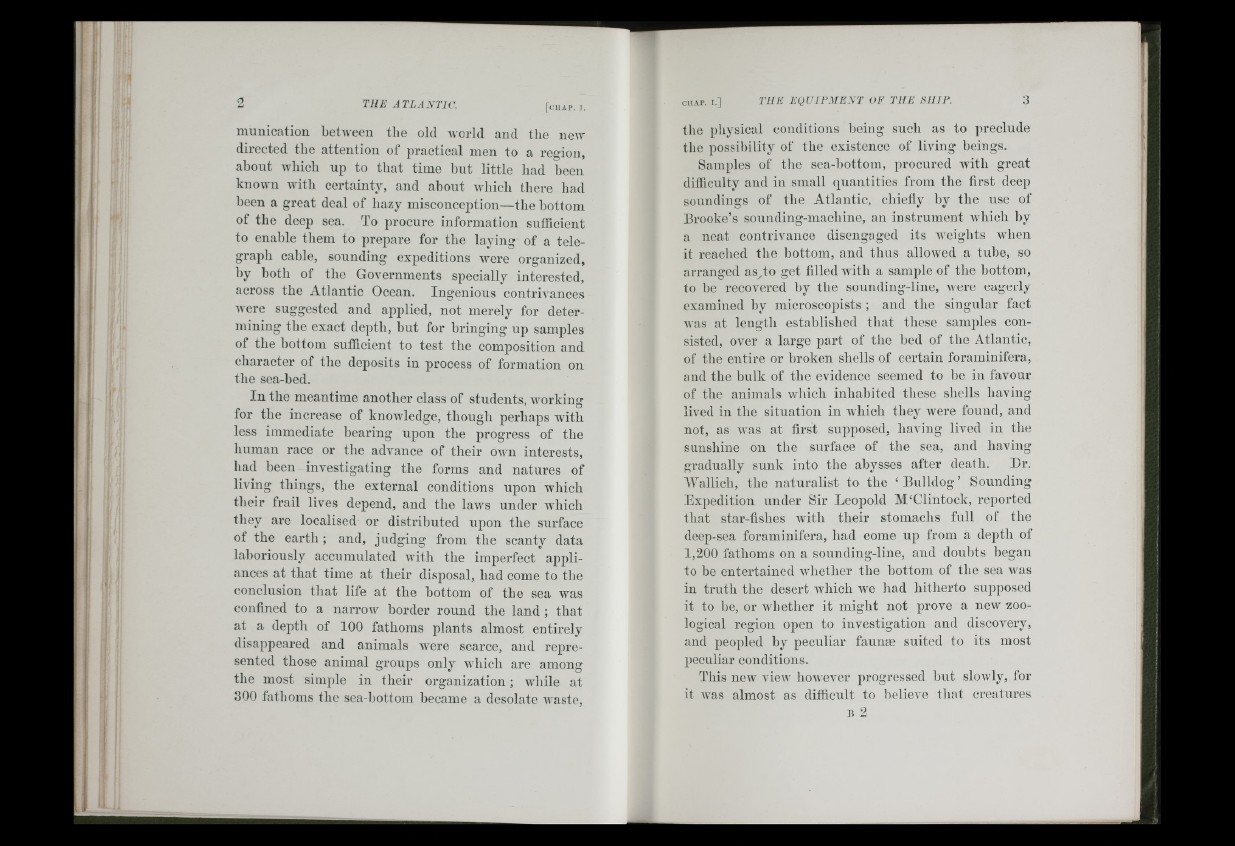
muuication between tbe old world and tbe neiv
directed the attention of practical men to a region,
about wliicli up to that time but little bad been
known with certainty, and about wdiicli there bad
been a great deal of hazy misconception—the bottom
of the deep sea. To procure information sufficient
to enable them to prepare for tbe laying of a telegraph
cable, sounding expeditions w’ere organized,
by both of the Governments specially interested,
across tbe Atlantic Ocean. Ingenious contrivances
were suggested and applied, not merely for determining
tbe exact depth, but for bringing up samples
of the bottom sufficient to test the composition and
character of the deposits in process of formation on
the sea-bed.
In the meantime another class of students,’ w’orkin^o
for the increase of knowledge, though perhaps with
less immediate bearing upon the progress of the
human race or the advance of their own interests,
had been investigating the forms and natures of
living things, the external conditions upon which
their frail lives depend, and the law^s under wffiich
they are localised or distributed upon the surface
of the earth ; and, judging from the scanty data
laboriously accumulated with the imperfect appliances
at that time at their disposal, had come to the
conclusion that life at the bottom of the sea was
confined to a narrow border round the land ; that
at a depth of 100 fathoms plants almost entirely
disappeared and animals w’ere scarce, and represented
those animal groups only wdiich are among
the most simple in their organization; while at
300 fathoms the sea-bottom became a desolate waste,
the pliysical conditions being such as to preclude
the possibility of the existence of living beings.
Samples of the sea-bottom, procured with great
difficulty and in small quantities from the first deep
soundings of the Atlantic, chiefly hy the use of
Brooke’s sounding-machine, an instrument which by
a neat contrivance disengaged its w’eights wdien
it reached the bottom, and thus allowed a tube, so
arranged as^to get filled wdtli a sample of the hottom,
to he recovered hy the sounding-line, w ere eagerly
examined by microscopists ; and the singular fact
w’as at length established that these samples consisted,
over a large part of the bed of the Atlantic,
of the entire or broken shells of certain foraminifera,
and the bulk of the evidence seemed to he in favour
of the animals wdiich inhabited these shells having
lived in the situation in wffiich they w^ere found, and
not, as was at first supposed, having lived in the
sunshine on the surface of the sea, and having
gradually sunk into the abysses after death. Dr.
AVallich, the naturalist to the ‘ Bulldog’ Sounding
Expedition under Sir Leopold M‘Clintock, reported
that star-fishes with their stomachs full of the
deep-sea foraminifera, had come up from a depth of
1,200 fathoms on a sounding-line, and doubts began
to be entertained wdiether the bottom of the sea was
in truth the desert which w’e had hitherto supposed
it to he, or wdiether it might not prove a new zoological
region open to investigation and discovery,
and peopled by peculiar faunae suited to its most
peculiar conditions.
This new view’ however progressed hut slowly, for
it w’as almost as difficult to believe tliat creatures
B